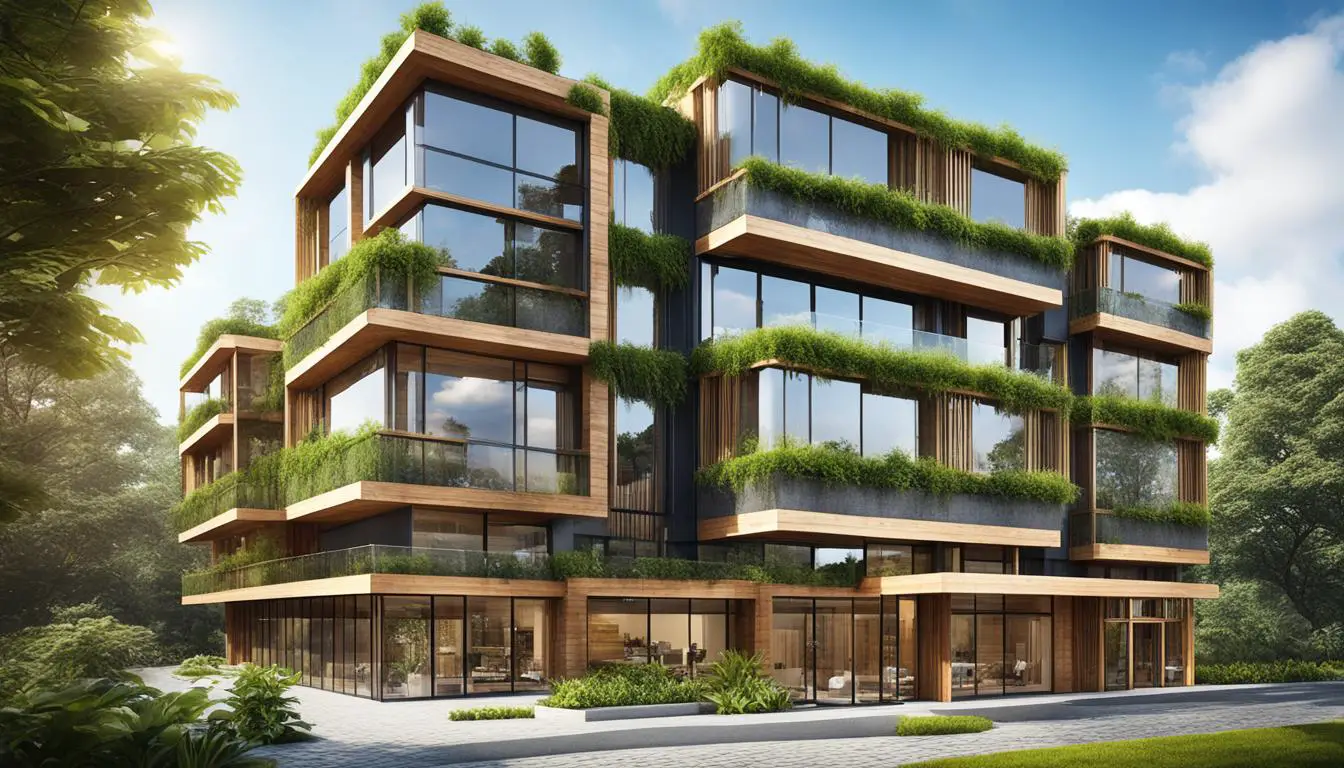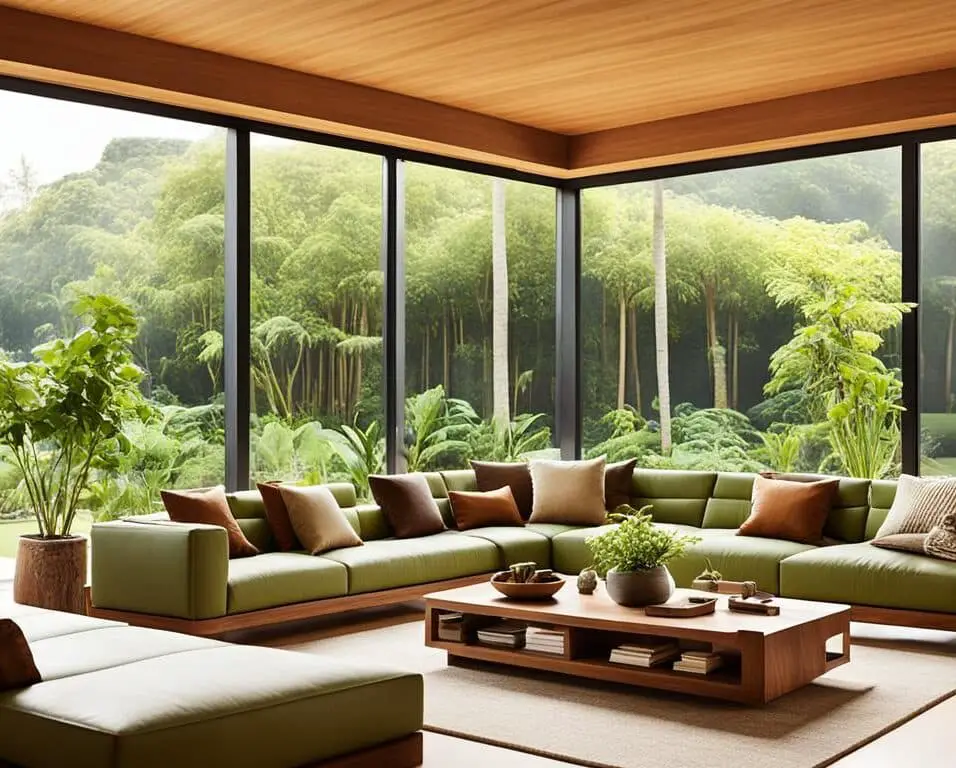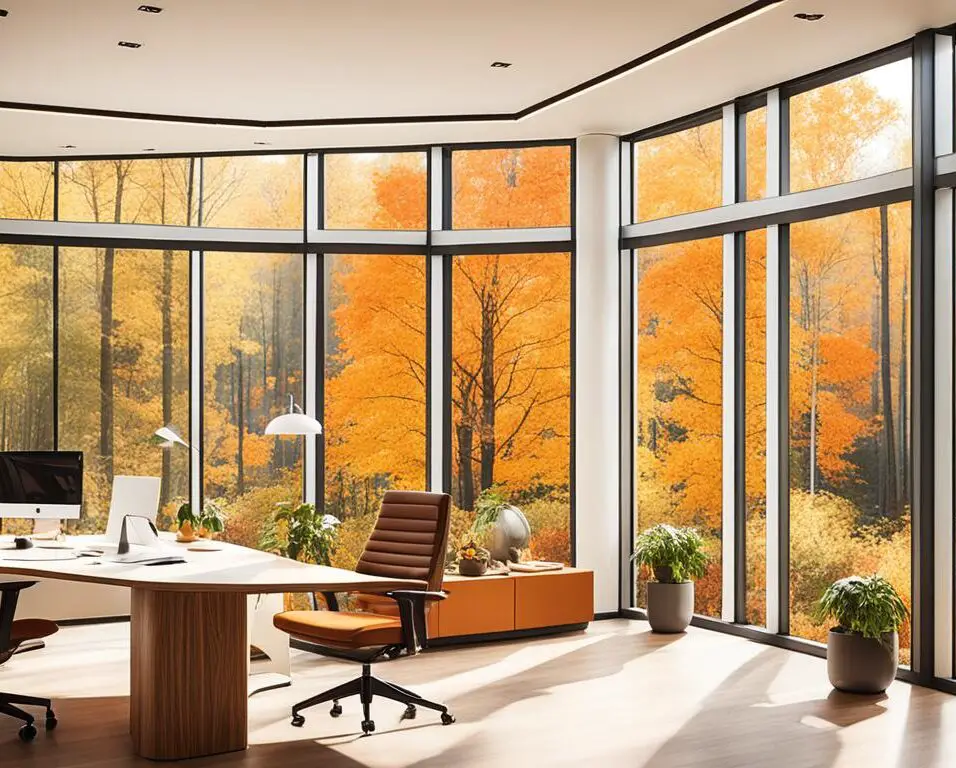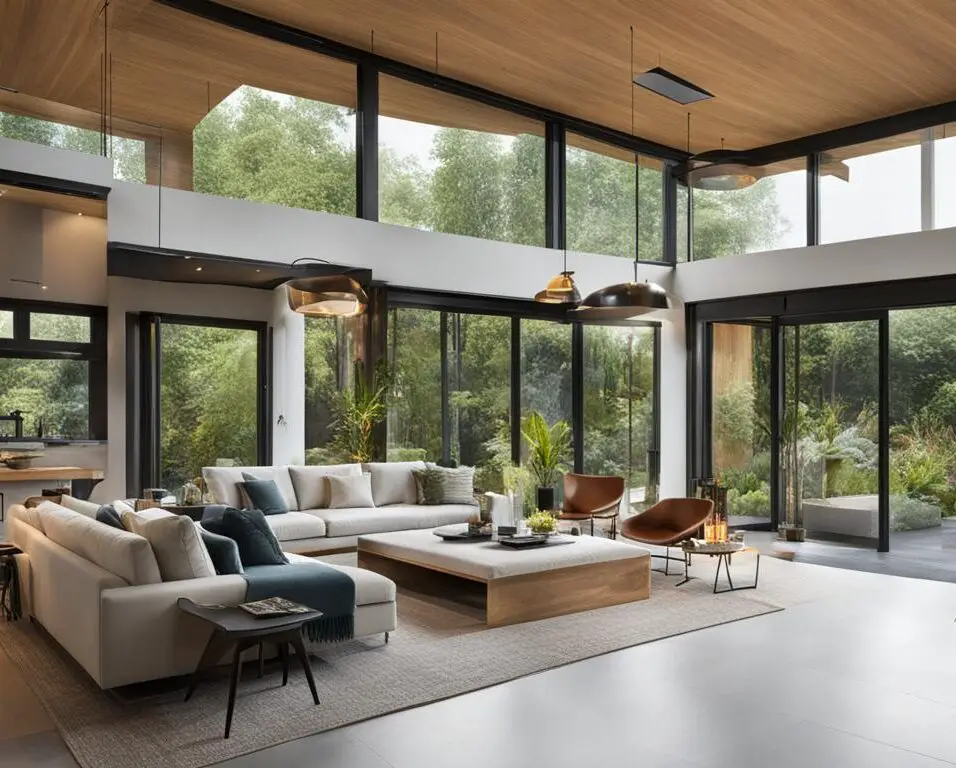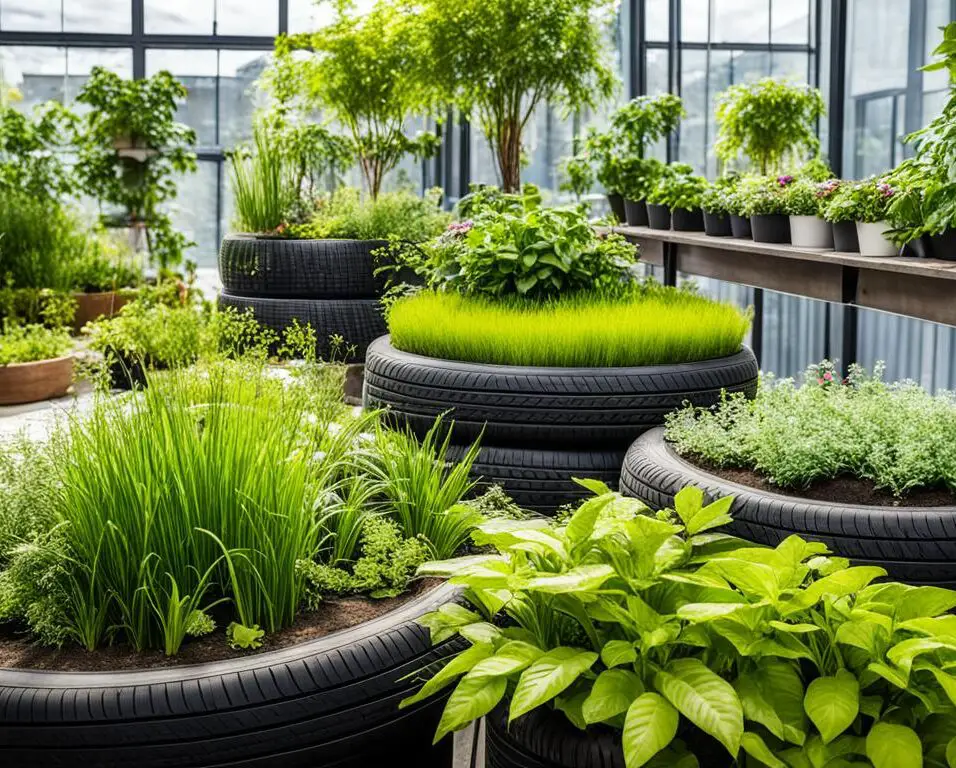Building Sustainably: Using Eco-friendly Materials in Biophilic Architecture
Biophilic architecture is a design approach that focuses on incorporating elements of nature into the built environment, creating spaces that promote well-being and connection with the natural world. One important aspect of biophilic architecture is the use of
sustainable materials that are environmentally friendly and have minimal impact on the planet. These materials are sourced responsibly, often using renewable resources, and are designed to be durable and long-lasting. By using sustainable materials, architects and designers can create buildings that harmonize with nature and contribute to the overall health and well-being of occupants.
Key Takeaways:
- Sustainable materials are crucial in biophilic architecture to create eco-friendly spaces that harmonize with nature.
- These materials are environmentally friendly and sourced responsibly, often using renewable resources.
- By utilizing sustainable materials, architects and designers can contribute to the overall health and well-being of occupants.
- Sustainable materials in biophilic architecture promote a more conscious and environmentally responsible approach to design.
- The use of sustainable materials fosters a sustainable future and creates spaces that benefit both people and the planet.
The Importance of Sustainable Material Selection in Biophilic Architecture
In biophilic architecture, the selection of sustainable materials plays a crucial role in creating eco-conscious spaces. By choosing materials that have a low environmental impact, architects can reduce the carbon footprint of a building and contribute to a more sustainable future. Sustainable material selection takes into account factors such as the sourcing of raw materials, manufacturing processes, durability, and recyclability of the materials.
In line with biophilic design principles, the use of sustainable materials goes beyond their ecological benefits. It also enhances the overall well-being of occupants by creating spaces that foster a connection with nature. These materials not only minimize harm to the environment but also offer aesthetic appeal and promote a healthier indoor environment free from harmful substances.
“Sustainable material selection is an integral part of biophilic architecture, contributing to a more harmonious coexistence between humans and nature.”
Architects and designers who prioritize sustainable material selection in their projects demonstrate a commitment to creating spaces that not only meet the needs of the present but also consider the well-being of future generations. By employing materials that align with biophilic design principles, they can ensure that the built environment harmonizes with nature, promoting a sense of calm, tranquility, and overall improved quality of life.
Moreover, the use of sustainable materials in biophilic architecture reduces reliance on finite resources and minimizes waste generation. Recycling and repurposing materials further contribute to a circular economy, where resources are used efficiently and productively.
The Environmental Impact of Sustainable Materials
Sustainable materials have a significantly lower environmental impact compared to conventional materials. This is achieved through responsible sourcing, production processes that prioritize renewable energy and reduced emissions, and long-lasting durability that minimizes the need for frequent replacements.
- Sustainable materials are sourced from responsibly managed forests and replenishable resources to ensure minimal deforestation and depletion of natural resources.
- Manufacturing processes for sustainable materials prioritize energy efficiency and carbon neutrality.
- Durable materials, such as reclaimed wood or recycled metal, reduce the need for frequent replacements, minimizing waste generation.
- Sustainable materials often have lower volatile organic compound (VOC) emissions, promoting better indoor air quality and occupant health.
- Recyclability and reusability of sustainable materials contribute to a circular economy, reducing the strain on landfills and promoting resource efficiency.
The cumulative environmental impact of sustainable material selection in biophilic architecture showcases the potential to create a more sustainable and regenerative built environment.
| Sustainability Benefits of Material Selection in Biophilic Architecture | Environmental Impact |
|---|---|
| Reduces carbon footprint | Significantly lower emissions and energy consumption compared to conventional materials. |
| Promotes a healthier indoor environment | Minimizes volatile organic compound (VOC) emissions, improving indoor air quality. |
| Conserves natural resources | Responsible sourcing from renewable resources reduces deforestation and depletion. |
| Minimizes waste generation | Durable materials require fewer replacements, reducing waste and landfill burden. |
| Fosters a connection with nature | Promotes well-being and psychological benefits through biophilic design principles. |
Innovative Sustainable Materials for Biophilic Architecture
The field of biophilic architecture is constantly evolving, inspiring the development of numerous innovative sustainable materials tailored specifically for this design approach. These materials are designed with the utmost consideration for the environment, often incorporating biodegradable or recycled components to minimize their impact.
Natural fibers are widely favored in biophilic architecture due to their renewable nature and aesthetic appeal. Materials such as bamboo and cork are frequently chosen for their sustainability and ability to blend harmoniously with natural elements.
To ensure healthier indoor environments, low VOC (volatile organic compounds) materials are actively utilized. These materials significantly reduce indoor air pollution, promoting the well-being of occupants. By opting for low VOC materials, architects can contribute to creating spaces that prioritize the health and comfort of those who inhabit them.
Another key aspect in biophilic architecture is the integration of energy-efficient materials. Insulation and glazing systems are strategically employed to minimize energy consumption and create buildings that are environmentally conscious.
To further illustrate the range of innovative sustainable materials available, here is a visual representation:
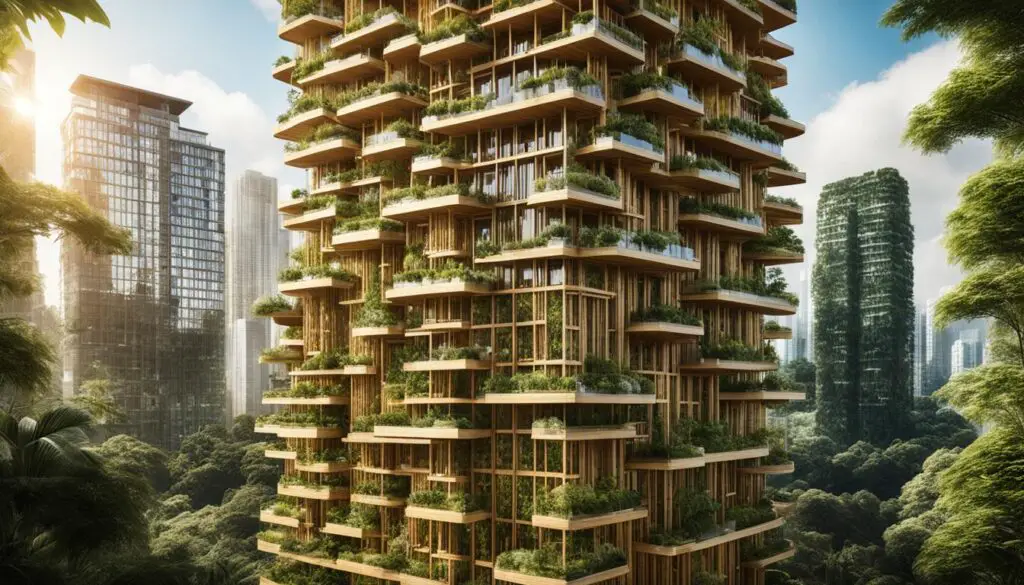
| Material | Description |
|---|---|
| Biodegradable Composites | Materials that break down naturally over time, reducing their environmental impact. |
| Recycled Plastics | Materials made from recycled plastic waste, diverting it from landfills and reducing the need for virgin plastic production. |
| Natural Fiber Insulation | Insulation made from renewable fibers such as hemp or wool, providing energy-efficiency while minimizing environmental harm. |
| Low VOC Paints | Paints with reduced levels of volatile organic compounds, improving indoor air quality and reducing harmful emissions. |
| Energy-Efficient Lighting | Lighting fixtures and bulbs designed to consume less energy, contributing to overall energy savings. |
These materials represent just a glimpse into the vast array of innovative sustainable options available for integration into biophilic architecture. By embracing these advancements, architects and designers have the opportunity to create spaces that prioritize both environmental sustainability and the well-being of their occupants.
Case Studies: Sustainable Materials in Biophilic Architecture
Real-world examples provide compelling evidence of the successful integration of sustainable materials in biophilic architecture. These case studies highlight the versatility and effectiveness of using sustainable materials to create harmonious and environmentally conscious spaces.
LinkedIn Office Expansion (Singapore)
The LinkedIn office expansion in Singapore serves as an exemplary case study in biophilic architecture. The design incorporates outdoor materials and biophilic elements to create a vibrant and sustainable workplace that enhances the well-being of employees. By integrating sustainable materials into the construction, such as responsibly sourced wood and recycled materials, the project showcases how biophilic architecture can offer both aesthetic appeal and environmental sustainability.
Modern House Designs (Philippines)
The modern house designs in the Philippines exemplify the integration of eco-friendly materials in biophilic architecture. These homes utilize sustainable materials and incorporate elements of nature to create comfortable and energy-efficient living spaces. From bamboo flooring to natural fiber insulation, these designs showcase the innovative use of sustainable materials to create environmentally conscious and visually stunning homes.
These case studies demonstrate the real-world application of sustainable materials in biophilic architecture, proving their ability to transform spaces into eco-friendly environments that prioritize the well-being of occupants while minimizing harm to the planet.
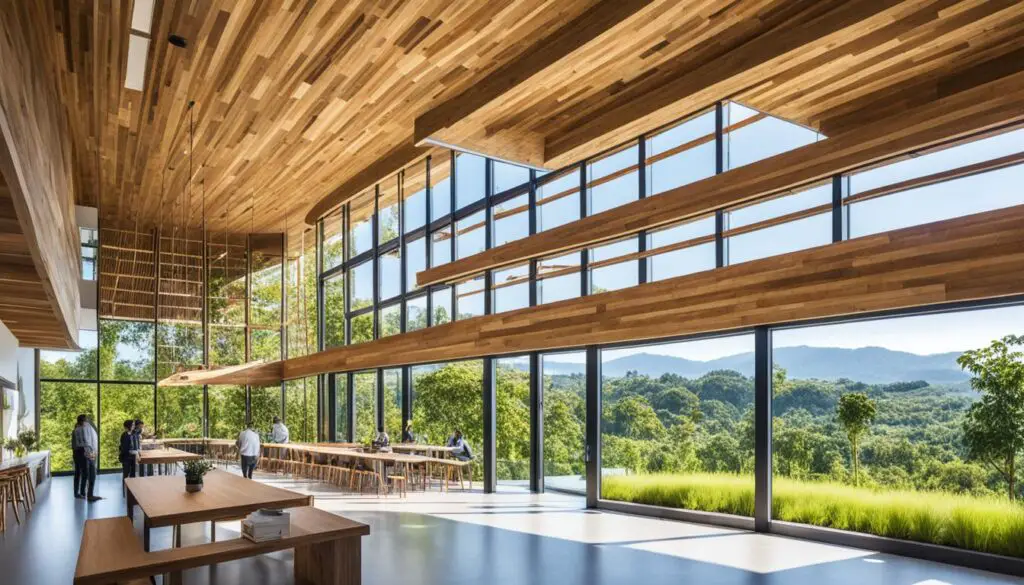
| Case Study | Description | Key Features |
|---|---|---|
| LinkedIn Office Expansion (Singapore) | Incorporates outdoor materials and biophilic elements to create a vibrant and sustainable workplace | – Responsibly sourced wood – Recycled materials – Integration of green spaces |
| Modern House Designs (Philippines) | Utilizes eco-friendly materials and incorporates elements of nature to create comfortable and energy-efficient living spaces | – Bamboo flooring – Natural fiber insulation – Passive cooling techniques |
Conclusion
Sustainable materials are essential in the realm of biophilic architecture as they play a vital role in creating environmentally friendly and healthier spaces. By incorporating these sustainable materials into the design process, architects and designers can establish buildings that not only harmonize with nature but also promote overall well-being. The use of sustainable materials in biophilic architecture is a growing trend that fosters a more conscious and environmentally responsible approach to design.
From innovative materials to real-world case studies, the integration of sustainable materials in biophilic architecture showcases its effectiveness in creating spaces that benefit both people and the planet. By embracing sustainable materials, we can pave the way for a more sustainable future while designing spaces that prioritize the health and happiness of the individuals who inhabit them.
By prioritizing the selection of sustainable materials and embracing the principles of biophilic architecture, we can create buildings that not only enhance our quality of life but also minimize harm to the environment. The evolution of sustainable materials in biophilic architecture is shaping the design approach towards a more environmentally friendly and conscious future.
FAQ
What is biophilic architecture?
Biophilic architecture is a design approach that incorporates elements of nature into the built environment, promoting well-being and a connection with the natural world.
Why is sustainable material selection important in biophilic architecture?
Sustainable material selection reduces the environmental impact of buildings, contributing to a more eco-conscious and sustainable future.
What factors are considered in sustainable material selection?
Factors such as raw material sourcing, manufacturing processes, durability, and recyclability are taken into account in sustainable material selection.
Source Links
- https://www.allinfohome.com/house-design/modern-house-design-in-philippines
- https://globaldesignnews.com/considering-tomorrows-needs-sca-design-linkedin-office-expansion-focuses-on-bringing-the-outside-in-and-incorporating-local-elements-within-the-office-space/
- https://www.allinfohome.com/house-design/modern-house-design-800-sq-ft



